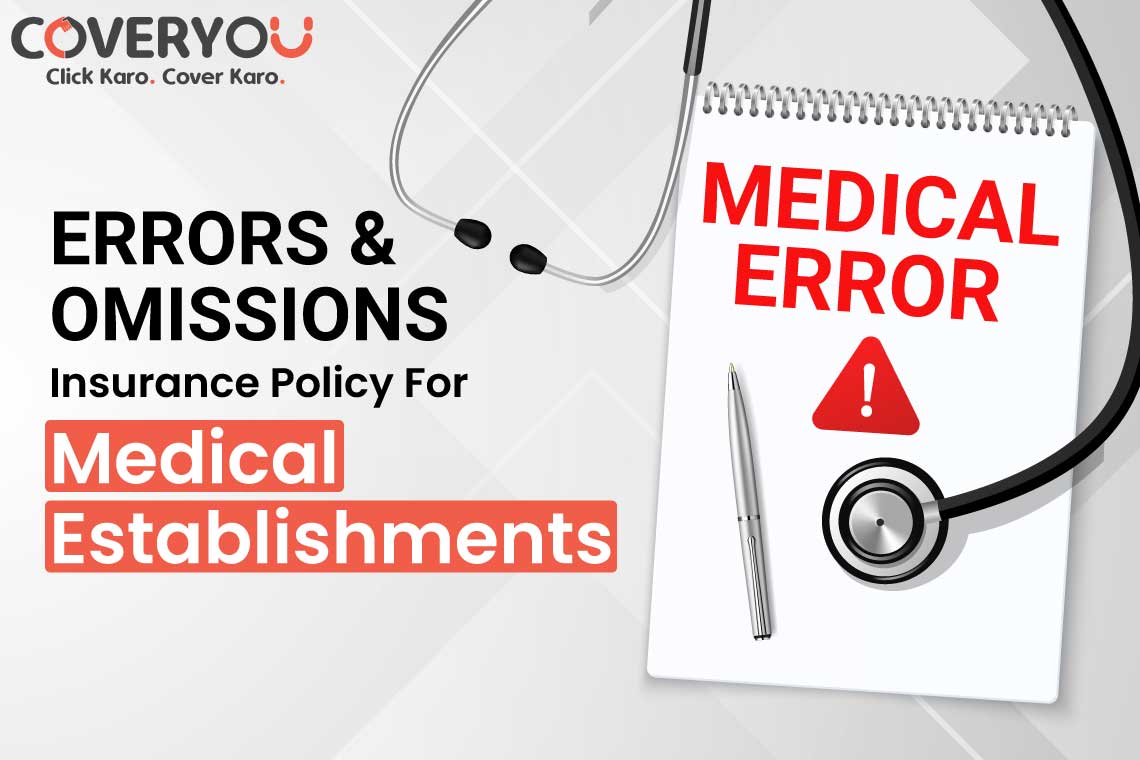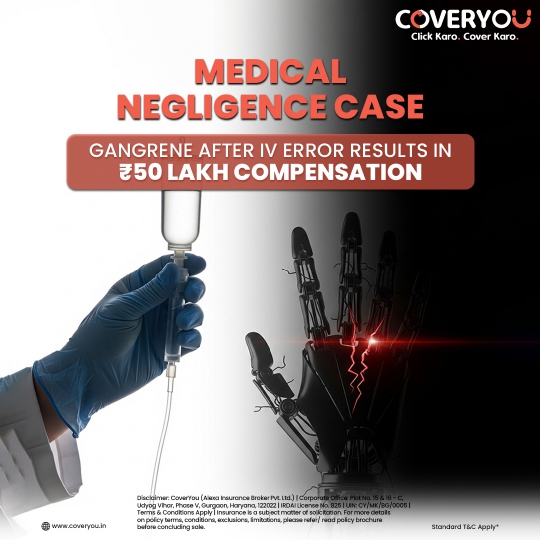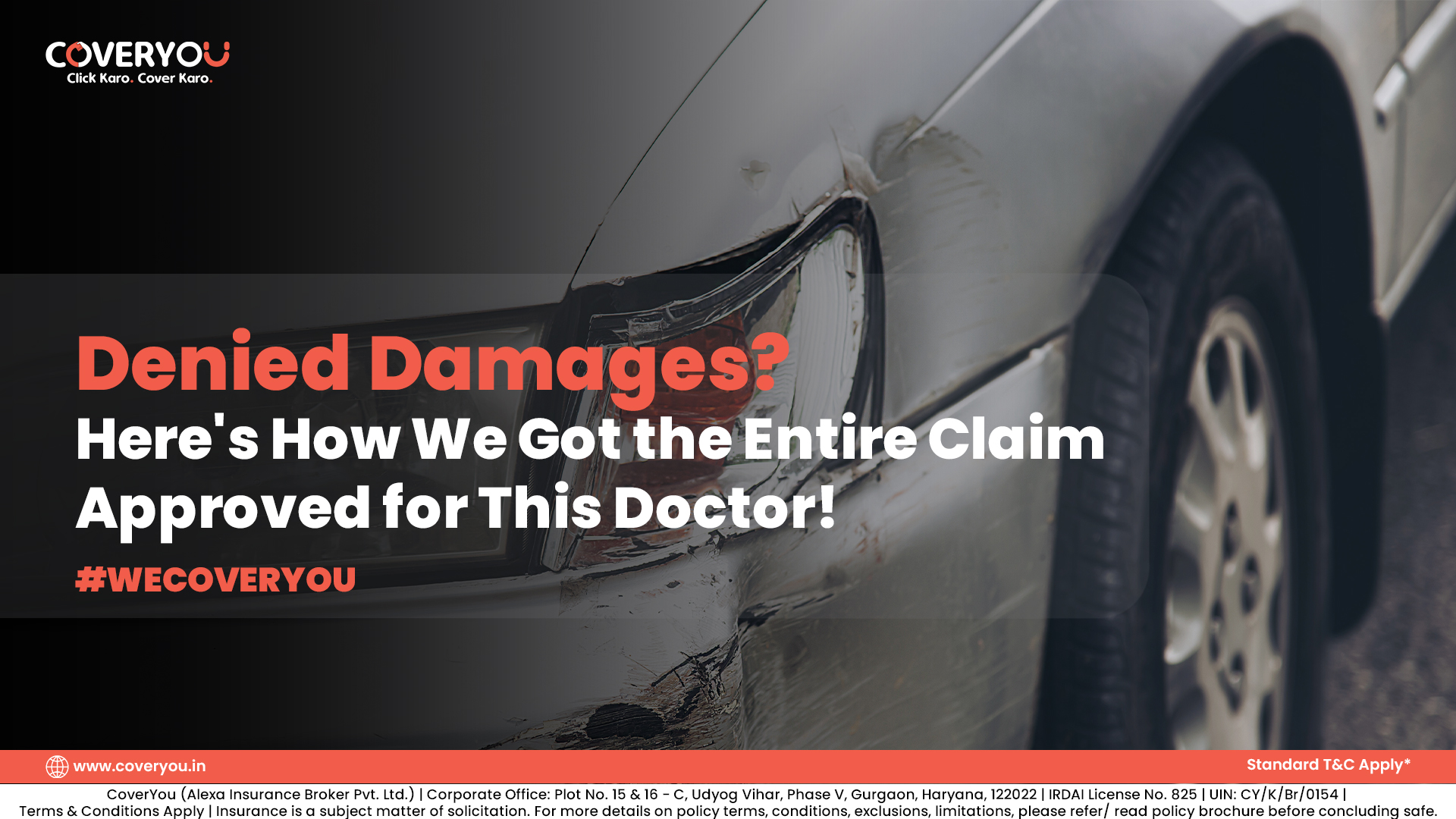Introduction to Errors & Omissions Insurance
In the ever-evolving landscape of healthcare, medical establishments play a crucial role in ensuring the well-being of individuals and communities. Hospitals, as the cornerstone of this intricate network, are dedicated to providing high-quality care and maintaining the highest standards of patient safety. However, even in the most vigilant environments, the unexpected can occur. That’s where Errors & Omissions (E&O) Insurance emerges as a vital safeguard.
Hospitals are not immune to the complexities and uncertainties inherent in the healthcare industry. Despite the best intentions and meticulous protocols, instances of alleged negligence, errors, or omissions can arise, potentially leading to legal ramifications. In this context, the importance of understanding and implementing a comprehensive Errors & Omissions Insurance policy becomes paramount for medical establishments.
In this blog, we delve into the world of E&O Insurance, exploring its significance in the context of hospitals and medical facilities. We aim to shed light on the protection it provides, the potential risks it mitigates, and how embracing this insurance strategy can contribute to sustaining the excellence and integrity that define the healthcare profession.
Understanding Errors & Omissions (E&O) Insurance
Errors & Omissions (E&O) Insurance is like a safety net for hospitals. It’s a special kind of insurance that helps protect them when things don’t go as planned. E&O insurance focuses on mistakes or oversights that might happen in the course of providing medical care. Hospitals need to understand that having this insurance is not just an option – it’s a smart way to be prepared for the unexpected.
The Potential Risks Faced by Hospitals
In the intricate world of healthcare, hospitals stand as pillars of healing, dedicated to providing top-notch care and ensuring patient safety. However, amid the noble pursuit of well-being, hospitals are not immune to the challenges that can arise within the complex landscape of medical practice. This section explores the potential risks that hospitals may encounter in their daily operations, shedding light on the nuanced scenarios where errors or misunderstandings might occur. Understanding these risks is crucial for hospitals to fortify their defenses and, ultimately, deliver care that is not only compassionate but also resilient in the face of unforeseen challenges.
1. Communication Challenges:
- Misunderstandings between healthcare providers and patients can happen, leading to potential issues.
- Lack of clear communication about treatment plans, procedures, or potential risks may contribute to disputes.
2. Medical Errors:
- Mistakes in diagnosis, treatment, or medication administration pose significant risks.
- Understanding the common types of medical errors is crucial for hospitals to address and mitigate these risks effectively.
3. Documentation Issues:
- Incomplete or inaccurate medical records can lead to misunderstandings and legal complications.
- Hospitals need robust documentation practices to ensure accurate recording of patient information and care provided.
4. Inadequate Informed Consent:
- Failure to obtain proper informed consent from patients before medical procedures can result in legal challenges.
- Explaining procedures, risks, and alternatives thoroughly to patients is essential for mitigating this risk.
5. Staffing Challenges:
- Shortages or inadequately trained staff can contribute to lapses in patient care.
- Ensuring proper staffing levels and continuous training are crucial aspects of risk management.
Legal Ramifications:
In the complex landscape of healthcare, hospitals stand as bastions of healing and care, committed to ensuring the well-being of their patients. However, within this noble pursuit, hospitals are not impervious to the intricate legal considerations inherent in the provision of medical services. This section delves into the legal dimensions that hospitals must navigate, exploring the potential consequences that unfold when the delicate balance is disrupted. From financial implications to reputational impacts, the examination of legal ramifications sheds light on the challenges hospitals may face in the aftermath of alleged negligence, errors, or omissions. This understanding is imperative for hospitals to fortify their defenses and uphold not only their financial stability but also the trust placed in them by their communities.
1. Financial Consequences:
- Legal battles can be expensive, and hospitals may face significant financial burdens without E&O insurance.
- Legal fees, settlements, and potential damages can impact a hospital’s budget and resources.
2. Reputational Impact:
- Legal disputes can tarnish a hospital’s reputation, affecting trust among patients and the community.
- Public perception is crucial in the healthcare industry, making reputation management a vital consideration.
3. Regulatory Compliance Issues:
- Legal challenges may arise from non-compliance with healthcare regulations and standards.
- E&O insurance helps hospitals navigate regulatory complexities and maintain compliance.
4. Patient Trust Erosion:
- Legal issues can erode patient trust in a hospital’s ability to provide safe and reliable care.
- Building and maintaining trust is essential, and E&O insurance plays a role in protecting that trust by addressing legal challenges effectively.
5. Operational Disruptions:
- Legal battles can disrupt normal hospital operations, affecting patient care and staff morale.
- E&O insurance helps in managing legal issues efficiently, minimizing disruptions and ensuring continuity of services.
Significance of Proactive Risk Management
For hospitals, the significance of proactive risk management is paramount in maintaining a steadfast commitment to patient safety and quality care. By adopting a proactive approach, hospitals can identify and address potential risks before they escalate into significant issues. This foresighted strategy involves meticulous planning, regular training, and the implementation of robust protocols to ensure that potential pitfalls are anticipated and mitigated. Hospitals recognize that proactive risk management not only safeguards the well-being of patients but also protects their own operational integrity. Through this approach, hospitals strive to create an environment where both healthcare providers and patients feel confident, fostering a culture of safety and continuous improvement. By staying one step ahead in risk management, hospitals actively contribute to the resilience of their healthcare delivery, reinforcing their dedication to excellence.
Benefits of Errors & Omissions Insurance for Hospitals
In the busy world of healthcare, where taking care of patients is the top priority, hospitals face lots of challenges every day. Errors & Omissions (E&O) Insurance emerges as a critical asset for these healthcare institutions, offering a protective shield against the unforeseen. This section delves into the tangible benefits that E&O insurance brings to hospitals, extending beyond financial safeguards to encompass the preservation of reputation, regulatory compliance support, and the cultivation of a resilient healthcare environment. Understanding these benefits underscores the pivotal role that E&O insurance plays in fortifying hospitals against potential pitfalls, allowing them to focus on their core mission of providing high-quality and uninterrupted patient care.
1. Financial Protection:
- E&O insurance serves as a financial safety net, covering legal expenses, settlements, and potential damages.
- Hospitals can avoid significant financial burdens that may arise from legal disputes, ensuring financial stability.
2. Reputation Management:
- Protection against legal challenges contributes to maintaining a hospital’s positive reputation.
- A strong reputation is vital for attracting patients and fostering trust within the community.
3. Regulatory Compliance Support:
- E&O insurance aids hospitals in navigating complex healthcare regulations, ensuring compliance.
- Legal experts provided by the insurance can offer guidance, helping hospitals adhere to industry standards.
4. Patient Trust Preservation:
- Legal issues can erode patient trust, impacting the credibility of a hospital.
- E&O insurance helps preserve patient trust by addressing legal challenges efficiently and transparently.
5. Operational Continuity:
- Legal disputes can disrupt normal hospital operations, affecting patient care and staff morale.
- E&O insurance minimizes disruptions, ensuring the continuity of services during challenging times.
6. Staff Morale and Confidence:
- Knowing that legal challenges are addressed through insurance boosts staff morale.
- Healthcare providers feel more confident in their roles, knowing there is a protective mechanism in place.
7. Strategic Risk Management:
- E&O insurance encourages hospitals to adopt proactive risk management strategies.
- By identifying and addressing potential risks, hospitals enhance overall patient safety and reduce the likelihood of legal challenges.
8. Resource Allocation Optimization:
- With E&O insurance, hospitals can allocate resources more efficiently, focusing on patient care rather than diverting funds to legal battles.
- This optimization supports the hospital’s core mission of providing quality healthcare services.
9. Peace of Mind for Stakeholders:
- Stakeholders, including patients, staff, and investors, gain confidence knowing the hospital has protective measures in place.
- E&O insurance provides peace of mind and reinforces the commitment to excellence in healthcare delivery.
10. Learning and Improvement Opportunities:
- Through the resolution of legal challenges, hospitals can learn from experiences and implement improvements.
- E&O insurance facilitates a culture of continuous improvement, enhancing the overall quality of healthcare services.
Selecting the Right Errors & Omissions Insurance Policy
In the ever-evolving landscape of healthcare, hospitals recognize the critical importance of Errors & Omissions (E&O) Insurance in safeguarding their operations. However, the efficacy of this protection lies in the careful selection of the right insurance policy. This section explores the key considerations and factors that hospitals must weigh when choosing an E&O insurance policy. From understanding specific coverage needs to evaluating policy features, the process of selecting the right insurance is crucial for hospitals to ensure comprehensive protection against potential liabilities.
1. Assessing Coverage Needs:
- Hospitals should conduct a thorough assessment of their unique risks and coverage requirements.
- Understanding specific areas of vulnerability enables the selection of a tailored policy that aligns with the hospital’s operations.
2. Policy Features and Exclusions:
- Hospitals must scrutinize the features of potential insurance policies.
- Paying attention to exclusions and limitations ensures that the chosen policy provides comprehensive coverage without unexpected gaps.
3. Claims History and Reputation of Insurer:
- Reviewing the claims history of potential insurers offers insight into their reliability.
- Opting for insurers with a solid reputation enhances confidence in the policy’s efficacy during times of need.
4. Policy Limits and Deductibles:
- Hospitals should carefully consider policy limits to ensure adequate coverage for potential liabilities.
- Evaluating deductibles is essential to understand the financial commitment required in the event of a claim.
5. Legal Support Services:
- Some E&O insurance policies offer legal support services.
- Hospitals may benefit from policies that provide access to legal experts for guidance in navigating potential legal challenges.
6. Tailored Risk Management Solutions:
- Look for insurers that offer tailored risk management solutions.
- Proactive risk management services can complement the insurance policy, further enhancing the hospital’s overall risk mitigation strategy.
7. Cost-Effective Premiums:
- While cost is a factor, hospitals should seek a balance between affordability and comprehensive coverage.
- Comparing premium costs among insurers helps identify cost-effective options without compromising on protection.
8. Flexibility and Customization:
- Opt for policies that allow flexibility and customization to adapt to changing circumstances.
- Hospitals may evolve, and a policy that can be adjusted to accommodate growth or changes in operations is advantageous.
9. Reviewing Contractual Obligations:
- Thoroughly review contractual obligations outlined in the insurance policy.
- Understanding the terms and conditions ensures clarity on both parties’ responsibilities and commitments.
10. Seeking Professional Advice:
- Hospitals may benefit from consulting with insurance professionals or risk management advisors.
- Seeking expert advice can provide additional insights and ensure that the selected policy aligns seamlessly with the hospital’s needs and objectives.
Case Studies and Success Stories: Illustrating the Positive Impact of E&O Insurance
Case Study 1: Urban Hospital
In a bustling urban setting, a hospital faced a challenging situation when a patient alleged negligence in a surgical procedure. With the support of their Errors & Omissions (E&O) Insurance, the hospital navigated the legal complexities seamlessly. The insurance coverage not only covered the legal expenses but also facilitated an independent review of the case, which ultimately demonstrated the hospital’s adherence to established protocols. As a result, the hospital emerged from the situation with its reputation intact, having successfully defended against the allegations.
Case Study 2: Community Medical Center
A community hospital in a suburban area experienced a medication administration error that led to concerns from a patient’s family. E&O Insurance played a pivotal role in resolving the issue promptly. The coverage not only assisted in addressing the family’s concerns but also provided resources for additional staff training to prevent similar incidents. The hospital’s proactive approach, supported by E&O Insurance, not only ensured patient satisfaction but also strengthened internal processes for improved medication safety.
Case Study 3: Regional Healthcare Network
A healthcare network faces a legal challenge related to documentation discrepancies in patient records. The hospital’s Errors & Omissions Insurance proved instrumental in covering the legal costs associated with the dispute. Moreover, the insurance provider offered access to legal experts who collaborated with the hospital to implement enhanced documentation practices. This collaborative effort not only resolved the immediate legal issue but also fortified the hospital’s commitment to maintaining accurate and comprehensive medical records.
Case Study 4: Large Medical Center
A large medical center invested in a comprehensive E&O Insurance policy that included legal support services. When faced with a complex malpractice lawsuit, the hospital leveraged these services to engage a team of experienced attorneys. The legal experts worked closely with the hospital’s internal legal team to navigate the case successfully. The outcome not only saved the medical center from substantial financial burdens but also showcased the effectiveness of having a robust E&O Insurance policy with tailored legal support.
Key Takeaways:
These case studies and success stories highlight how hospitals, armed with the right Errors & Omissions Insurance, not only weathered legal challenges but also emerged stronger. The positive outcomes showcase the multifaceted benefits of E&O Insurance, including financial protection, reputation preservation, and the opportunity for continuous improvement in patient care and risk management.
{The real names are not disclosed.}
How does CoverYou help with legal requirements for Errors & Omissions Insurance to doctors?
CoverYou stands out as the best choice for doctors for several compelling reasons:
- Tailored Solutions: CoverYou specializes in Professional Indemnity Insurance, focusing on the unique needs of professionals, including doctors. They provide customized coverage solutions designed to meet specific requirements.
- Customized Coverage: They offer tailored insurance products like ‘Customized Doctor’s Professional Indemnity’ and ‘Customized Hospital Indemnity‘ to address the distinct needs of medical practices.
- Simplified Processes: CoverYou streamlines insurance management with one-click policy issuance and claims processing, allowing doctors to focus more on patient care and less on paperwork.
- Comparison Analysis: Their online platform enables doctors to compare insurance quotes easily, making well-informed decisions that align with their budgets and professional needs.
- Expert Guidance: CoverYou‘s team of experts guides every step, helping doctors navigate E&O Insurance complexities confidently.
- Legal Compliance: We help doctors follow the rules and laws in healthcare, making sure they don’t run into legal problems. Our team of over 10,000 expert lawyers is ready to provide quick legal support, reducing the risk of issues related to Errors & Omissions Insurance.
- Financial Protection: CoverYou offers comprehensive financial protection, safeguarding doctors’ assets and careers from the financial impact of legal disputes.
Medical Association Partnerships: With partnerships with 75 + medical associations, CoverYou provides cost-effective insurance solutions, showing their commitment to the medical community.

















